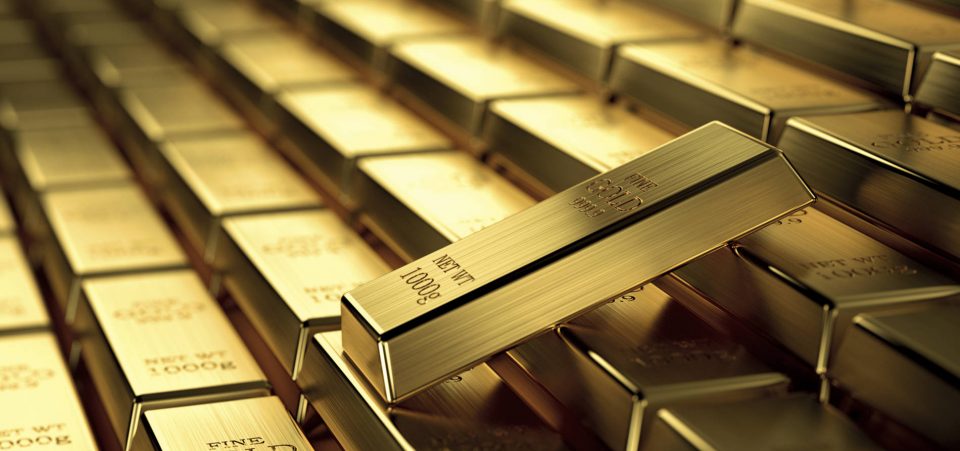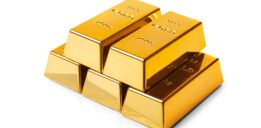Russian Central Bank is King Midas of Hoarding
Russia is hoarding gold at a breathtaking pace, and the Russian Central Bank is now the world’s largest buyer of gold. In fact, the Central Bank of the Russian Federation has been on a buying spree since 2014, amassing bullion at a record pace.
In October, Russia added a whopping 40.4 tons (1.3 million ounces) of gold, to its precious metals reserve. This is a new monthly record, and more than 2.5 times what it added in September (16.5 tons). (Source: “Russia Buying Gold in October,” GoldCore Limited, November 23, 2016.)
This represents the 21st consecutive month that the Russian Central Bank has been the biggest buyer of gold. Russia now has the seventh-largest gold reserve in the world with 1.5 million tons of gold. (Source: “Latest World Official Gold Reserves,” World Gold Council, November 2, 2016.)
The Russian Central Bank’s recent buying spree isn’t a total surprise. Back in June 2015, Elvira Nabiullina, head of the Russian Central Bank, said the bank expects to increase Russia’s international reserves to $500.0 billion within three to five years, from $360.5 billion. (Source: “Russia to Increase Its Gold Reserves,” Sputnik, June 4, 2016.)
Russia Forced to Diversify Its Reserves with Gold
The Russian Central Bank is working to increase its gold reserves to its previous levels that were in excess of $500.0 billion during 2012-2013. Since that time however, two things have happened. First, oil prices cratered from their 2013 highs of around $110.00 per barrel to approximately $45.00 per barrel today. Second, Russia faced international sanctions after invading Crimea in March 2014.
Russia’s economy has been in a tailspin ever since. In 2011, the country’s gross domestic product (GDP) was 4.2%. In 2012 the country’s GDP slipped to 3.5%, fell to 1.29% in 2013, dropped to 0.70% in 2014, and was -3.7% in 2015. (Source: “GDP growth (annual %),” The World Bank Group, last accessed November 24, 2016.)
This is a far cry from the -7.8% GDP in 2009, during the depths of the U.S. financial crisis, but still shows the reliance that Russia has on the U.S. and its allies. It also shows the resilience of the Russian government.
The sanctions, in conjunction with low oil prices, were expected to bring the Russian economy to its knees. This didn’t happen. Well, the country is in a recession, granted, but the sanctions have pushed it to creating closer ties with China. And both countries are looking to wean themselves off of the U.S dollar, the world’s reserve currency. The best way to do that is to use a hard asset that is easily tradable everywhere.
Russia Backs Ruble with Gold
To this end, the country has been hoarding bullion to diversify its reserves, prop up the ruble, and make its economy more independent and resilient to external pressures, including another U.S. economic crisis and sanctions.
Since the beginning of 2014, the Russian Central Bank has increased its official gold reserves by over 50%. During the same time frame, it also cut its U.S. Treasury holdings by around 50%.
Remember, the ruble is, on the surface, the same as the Greenback. It’s a fiat currency; legal tender that isn’t backed by anything but the good will of the government. It isn’t backed by anything.
A Bullish Case for Gold
Russia isn’t the only central bank buying the recent dip in gold prices. Central banks around the world have been buying gold with a vengeance. Sure, central banks talk about investing conservatively and how their economies are gaining momentum, but the fact remains, central banks are the biggest buyers of gold.
Roughly 20% of all the gold ever mined is held by central banks and governments. The biggest reserves are in the U.S. at 8,134 tons, although Fort Knox isn’t exactly known for its transparency. Germany is a distant second with 3,378 tons.
It’s no coincidence that central banks are back to buying gold. In fact, central banks have been net buyers of bullion since 2010, the year after the U.S. financial crisis. Between 2010 and 2014, central bank demand for gold has soared from less than two percent to 14%. So it’s not just Russia looking to diversify its holdings. (Source: “Central Banks,” World Gold Council, last accessed November 24, 2016.)
Demand for gold since 2014 has been even more robust. In 2014, global central banks purchased 584 tons of gold, the largest amount in 50 years. At least until 2015, when central banks purchased 588 tons of gold. It looks like 2016 could be another huge year of gold purchases for central banks.
Why do central banks continue to add gold to their reserves? The Federal Reserve might hike rates in December but real interest rates in the U.S. will remain negative. Negative rates throughout the world suggest the global economy is not doing very well.
Moreover, negative interest rates have not exactly boosted the global economy or investment. As a percentage of GDP, investment is still below pre-crisis levels in the U.S., U.K., Japan, and Europe.
Here at home, many analysts expect the U.S. economy to weaken under a Trump presidency. The U.S. is economy is already fragile. If the U.S. economy stalls in 2017 and actually enters a recession, the Fed will have nowhere to go but into negative interest rates. Even though they don’t work.
Russia and many central banks have been buying gold since 2010, whether prices were rising or falling. The recent dip in bullion prices has made it an even more attractive hedge. For investors who are unable to load up on physical gold like the central banks, there are still some great investing options out there.
One of the best ways to get exposure to physical gold without owning it is with the SPDR Gold Trust (ETF) (NYSEARCA:GLD). Gold mining companies have also been big winners in 2016. The future continues to be bright for big gold mining stocks like Goldcorp Inc. (NYSE:GG) and Barrick Gold Corporation (NYSE:ABX).






